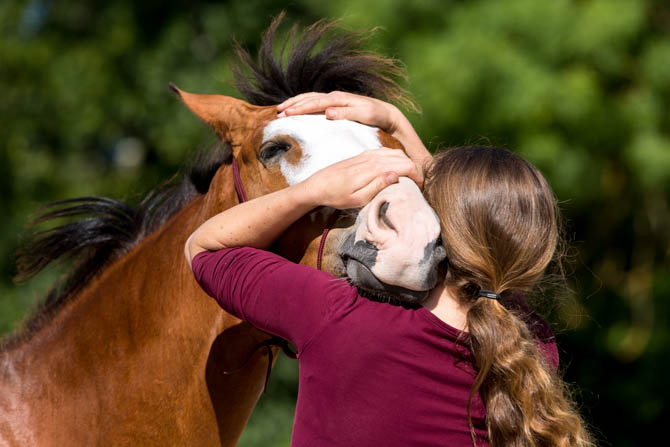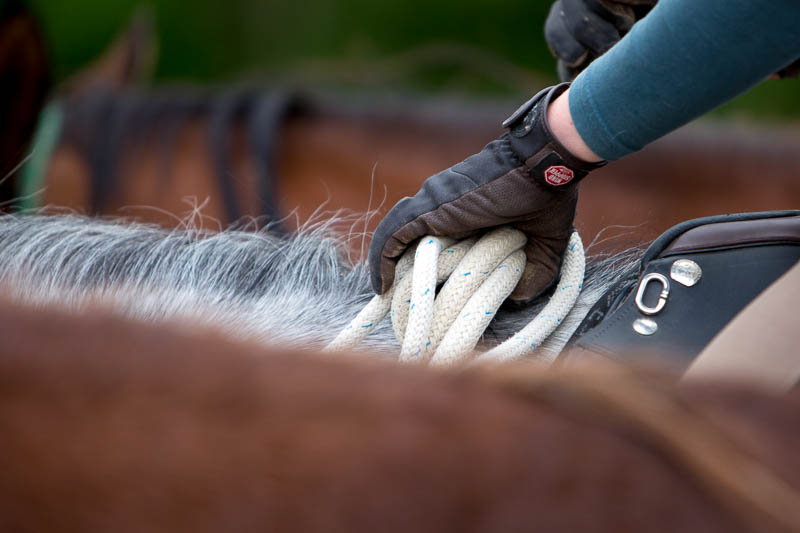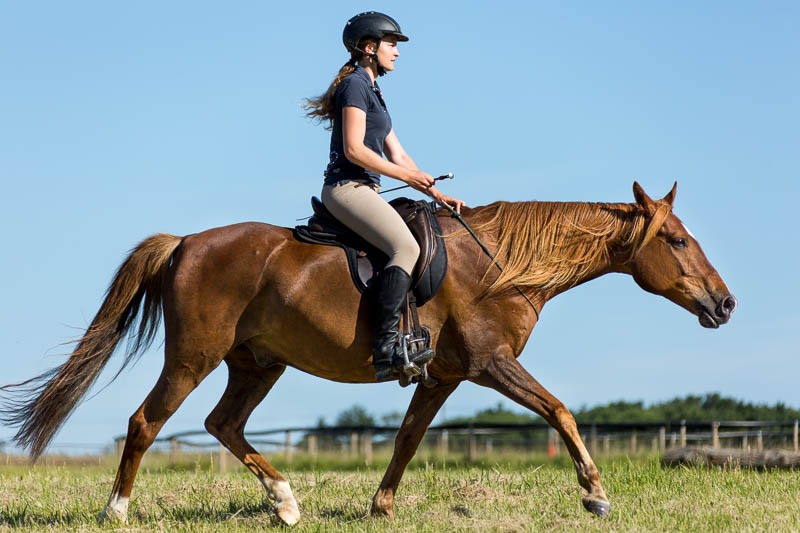Preparations for Colt Starting: Control the horses gaits Part 1 [Video]
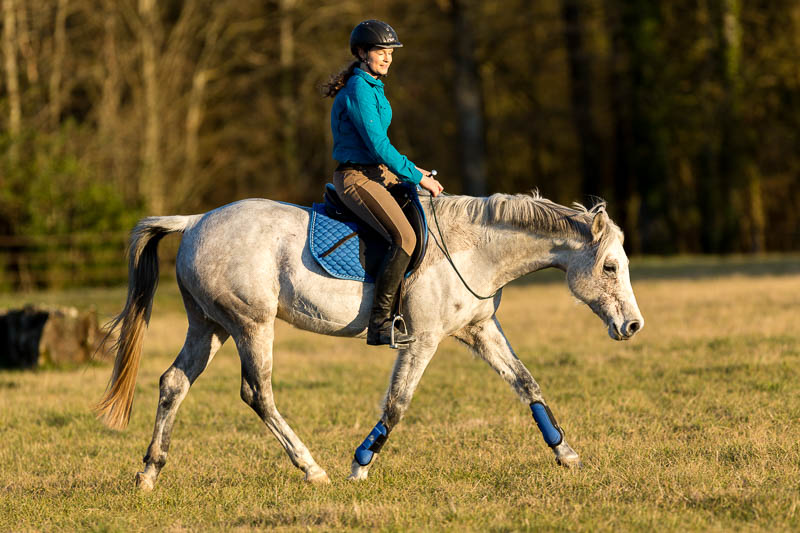
When we ride a horse, it is the most normal thing that we ask the horse to do upward and downward transitions. We expect, without question, that the horses willingly accept that we are in control of his impulsion. We only start to think about it, once we run into trouble: the horse either won’t go or is hard rushing and bracing.
What seems so easy to us is not always easy for our young horses to understand when they get started under saddle. The good news is that with a few specific exercises done on the ground, you can gain your horse’s respect and willingness to let you control his gaits.
In my article “14 preparation for a safe and respectful Colt Starting” you can read about “exercises to gain the horses willingness to let me control his gaits”. In this article, I will explain the first two exercises in this category.
Through the touch it game, you have already Established a Dialog with your Horse. Your horse has a basic idea of answering correctly to requests about going forward and stopping. This is the foundation to gain the horse’s willingness and acceptance to let me control his gait.
Now it is time to get a bit more particular about your horse’s impulsion - in a playful and structured way.
Exercise # 1: The Good girl/good boy stop
Wouldn’t it feel good if you could smile and just relax and your horse would stop? With the good girl/boy stop, the horse learns to quit doing whatever it was doing and melt to a stop to get the reward. It is a combination of voice cue and relaxing my energy.
In my experience, this is a stop button that works very well when the horse is not in a fearful mode. The horse learns to connect to my energy and intention.
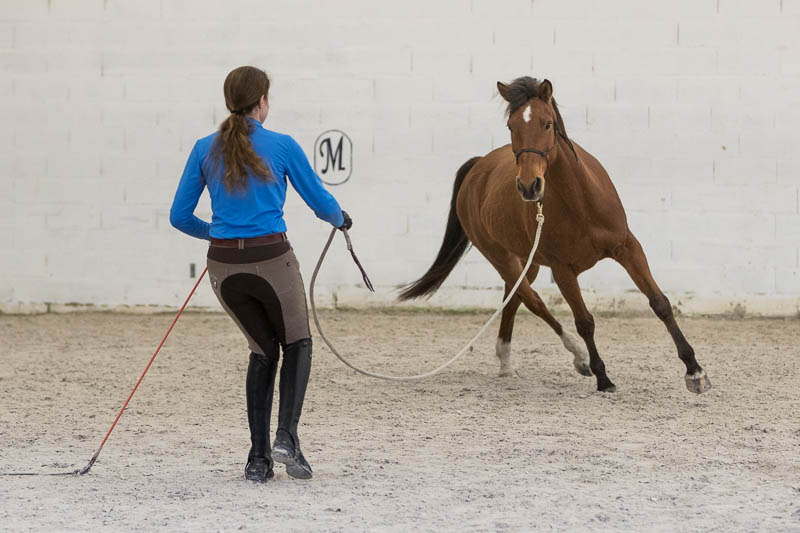
Objective:
Your horse stops doing whatever it was doing when you say your Jackpot word (which we install during the Touch it game [link]), smile and relax.
Material needed:
Halter, 3.7 m or 7 m rope, Stick and String, voice
Benefits:
- you have a natural stop button once you start to ride
- your horse knows 100% that he did something right when you use this cue.
How to teach it to your horse:
The good girl/good boy stop will develop naturally out of the Touch-It game. In the Touch-It game, the horse will learn the following association:
Correct Answer - Jackpot Word - Stop and Praise.
Use this sequence consistently. Soon your horse will hit the breaks and relax to a stop as soon as you smile, relax and say your jackpot word.
What to do if it doesn’t work and your horse doesn’t stop?
Make sure that you have turned off your energy first. Relax your shoulders, breathe deeply and relax your jaw by smiling. Often we keep a little tension in our body. Horses feel this and respond to it accordingly.
Then, if your horse still doesn’t get it:
Play more touch its. Can you do them at a trot? Are you praising your horse when he “hits the jackpot?” Do you praise your horse in a way he appreciates?
If you have a very hot horse who tends to run and doesn’t respond: Disengage your horse’s hindquarters so that he has to look at you. Then relax and reward. If he still feels like running, let him go and disengage again after half a lap. Repeat this until your horse can follow your energy of relaxation.
Challenge yourself:
Can you:
- stop your horse from a canter
- stop your horse after a jump
Watch this video to see how even my excitable mare Salima learned to stop with this cue.
Exercise # 2: The Question Cone Game
Many young horses have difficulty understanding why they should run in circles. When trying to learn they get all creative about it—speeding up, slowing down, egg shape, square, with changes of direction… By simply placing one cone on the circle, I can add a lot of focus and purpose.
At this cone, I will ask for upwards and downwards transitions. The horse has the chance to anticipate a request and make himself mentally ready. Very soon he will even show off how clever he is—another reason for praise and to make the horse feel good about himself.
Objective:
You can ask your horse to do upward and downward transitions. He does them willingly and with ease. You have control over the gaits of your horse - you can shift gear.
Material needed:
Halter, Leadrope, 7 m rope for cantering, cone or similar small object
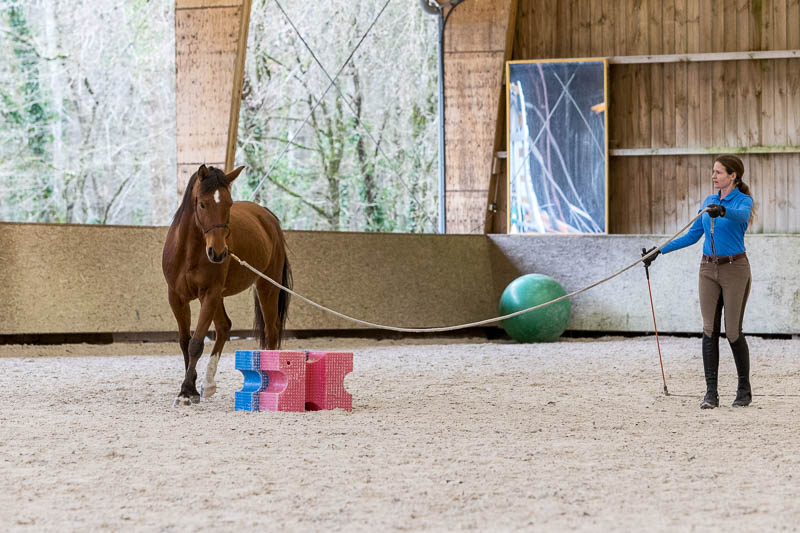
Benefits:
- the cone gives purpose and focus to circles for you and your horse
- it will cause the horse to be attentive and to ask questions
- it introduces sustained work and maintaining gait
- your horse gives you willing permission to control his gaits.
How to teach it to your horse
You need a place with good footing. If you don’t have an arena, choose a place in your field where the ground is not slippery and not too hard. Mark the middle of your circle. Then place the cone out on the circle line.
The horse’s line of travel should be behind the cone. Count 3 big steps if you are using the 3.7 m lead rope and 6 steps if you are using the 7 m rope.
Start by sending your horse out on the circle and ask it to stop and touch the marker. Do this from both sides. Once the horse starts to assume the stop, ask him to continue the circle. Now you can alternate stopping and walking past.
Praise your horse whenever it gives correct answers. As soon as your horse gives appropriate answers for stopping or just keep going past the marker, you can start to ask for upward and downward transitions.
Usually, I don’t keep the horse on the circle for very long, especially young horses. I like to do 3 sequences of 3-4 laps at a time instead of working the horse for 20 laps at once. Have a certain goal in mind and work towards that.
This gives you a clear focus and your horse will catch onto your idea quicker. He will feel smart and successful sooner. You want to gymnastisize the mind, not the body.
For example: You horse is lazy and has a hard time to pick a canter lead.
Step one would be that each time he passes the cone, you ask him to trot. As soon as he picks a trot out of himself or from a minimum request, you praise and give a break. The next step is to ask for canter each time he passes the cone. It doesn’t matter that he keeps the canter, just that he picks it willingly. Soon he will start to associate the cone with speeding up.
How to use your phases when sending your horse forward correctly:
Phase 1: point with your rope hand in the direction you want your horse to go, raise your energy.
Phase 2: lift your stick
Phase 3: swing the string behind the horse
Phase 4: swing the string and touch the horse on his rear end/top of the tail
It is very important that you respect and apply these phases rigorously. By using them consistently, you make sure to always ask politely first but become as firm as necessary to get your point across.
Challenge yourself:
Can you:
ask your horse to pick a canter exactly at the cone
- do a transition from halt - trot
- trot to halt
- back up at the cone
- back up to trot
- or even walk to canter? - this is very advanced
Conclusion
Building a horse’s impulsion takes time. Some horses are more introverted, some are more extroverted. You need to adapt your approach to your horse’s spirit level and place your reward at the right moments.
For hot horses, you want to reward when they are calm and relaxed and you need to offer a lot of consistency to them. Introverted horses you need to reward when they put effort and you have to trigger their enthusiasm with a playful and interesting session.
Related Articles


